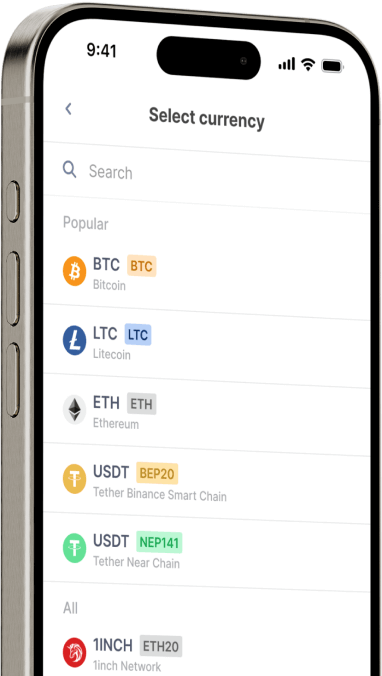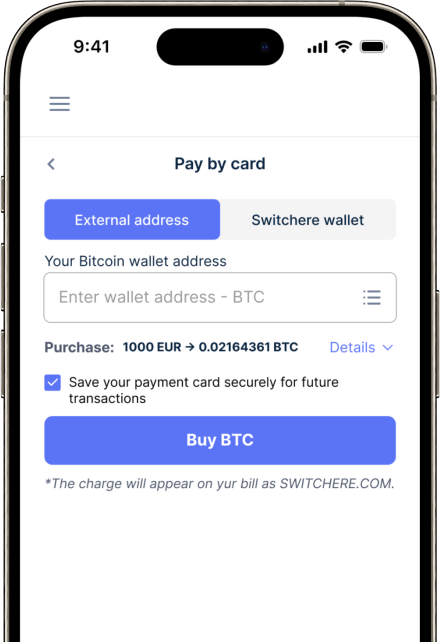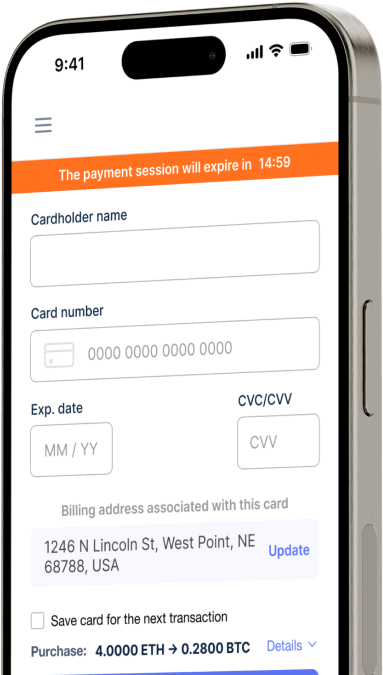전환하다
Romanian Leu (RON)에서 Cosmos (ATOM)로 즉시
Switchere에서 Cosmos (ATOM)로 Romanian Leu (RON)를 간편하게 구매하고 빠르고 안전한 거래의 혜택을 누리세요.
정보
Cosmos (ATOM)
코스모스(ATOM)는 블록체인 상호운용성이라는 업계의 중대한 과제를 해결하기 위해 설계된 탈중앙화 네트워크로, 스스로를 '블록체인의 인터넷'으로 자리매김하고 있습니다. 근본적인 목표는 주권을 가진 애플리케이션별 블록체인들이 원활하게 통신하고 거래할 수 있는 멀티체인 생태계를 만드는 것입니다. 이는 안전하고 고성능의 비잔틴 장애 허용(BFT) 프레임워크를 제공하는 텐더민트 코어 합의 엔진을 포함한 강력한 기술 스택을 통해 달성됩니다. 개발자들은 코스모스 SDK를 사용하여 특정 사용 사례에 맞춘 맞춤형 블록체인, 즉 '앱체인'을 효율적으로 구축할 수 있습니다. 이 아키텍처는 상호 연결된 디지털 원장 네트워크를 위한 기초적인 웹3 인프라를 제공하여 전통적으로 서로 다른 블록체인 네트워크를 고립시켰던 장벽을 허뭅니다.
이러한 상호연결성의 핵심은 독립적인 체인 간에 데이터와 디지털 자산의 안전한 전송을 가능하게 하는 표준화된 메시징 계층인 인터블록체인 통신(IBC) 프로토콜입니다. 네이티브 유틸리티 토큰인 ATOM은 네트워크의 최초이자 가장 중요한 블록체인인 코스모스 허브의 보안과 거버넌스의 중심에 있습니다. 보유자들은 ATOM을 스테이킹하여 지분 증명 합의 메커니즘에 참여하고, 허브를 보호하며 보상을 받습니다. 또한 ATOM은 거버넌스 토큰으로 기능하여 커뮤니티가 네트워크 업그레이드 및 프로토콜 변경에 대해 투표할 수 있도록 권한을 부여합니다. 진정한 크로스체인 기능을 구현함으로써 코스모스는 복잡한 디파이 애플리케이션의 새로운 물결과 더 통합된 디지털 경제를 위한 기초 계층 역할을 합니다.
다른 150개 이상의 암호화폐를 Romanian Leu (RON)에 구매하기
Romanian Leu (RON)의 다른 코인
-
RON에 대한 ZRX
-
RON에 대한 1INCH
-
RON에 대한 AAVE
-
RON에 대한 ACH
-
RON에 대한 ALGO
-
RON에 대한 TLM
-
RON에 대한 ANKR
-
RON에 대한 APE
-
RON에 대한 NFT
-
RON에 대한 API3
-
RON에 대한 APT
-
RON에 대한 ARPA
-
RON에 대한 AUDIO
-
RON에 대한 AVAX
-
RON에 대한 AVAX
-
RON에 대한 AXS
-
RON에 대한 BADGER
-
RON에 대한 BAL
-
RON에 대한 BNT
-
RON에 대한 BAT
-
RON에 대한 BNB
-
RON에 대한 BSW
-
RON에 대한 BSV
-
RON에 대한 BLUR
-
RON에 대한 BONE
-
RON에 대한 CTSI
-
RON에 대한 CELR
-
RON에 대한 CELO
-
RON에 대한 CEL
-
RON에 대한 LINK
-
RON에 대한 CHZ
-
RON에 대한 CHR
-
RON에 대한 C98
-
RON에 대한 COMP
-
RON에 대한 CFX
-
RON에 대한 PEOPLE
-
RON에 대한 CVX
-
RON에 대한 ATOM
-
RON에 대한 CTC
-
RON에 대한 CRV
-
RON에 대한 DAI
-
RON에 대한 DASH
-
RON에 대한 MANA
-
RON에 대한 DENT
-
RON에 대한 DGB
-
RON에 대한 DYDX
-
RON에 대한 XEC
-
RON에 대한 EOS
-
RON에 대한 ETC
-
RON에 대한 ENS
-
RON에 대한 ETHW
-
RON에 대한 FET
-
RON에 대한 FIL
-
RON에 대한 FLOKI
-
RON에 대한 GALA
-
RON에 대한 GNO
-
RON에 대한 ONE
-
RON에 대한 HBAR
-
RON에 대한 HOT
-
RON에 대한 HOOK
-
RON에 대한 ICX
-
RON에 대한 ILV
-
RON에 대한 IMX
-
RON에 대한 INJ
-
RON에 대한 ICP
-
RON에 대한 IOST
-
RON에 대한 IOTX
-
RON에 대한 JASMY
-
RON에 대한 JST
-
RON에 대한 KAVA
-
RON에 대한 KCS
-
RON에 대한 KSM
-
RON에 대한 KNC
-
RON에 대한 LDO
-
RON에 대한 LQTY
-
RON에 대한 LPT
-
RON에 대한 LOOKS
-
RON에 대한 LRC
-
RON에 대한 LUNA
-
RON에 대한 MKR
-
RON에 대한 MASK
-
RON에 대한 EGLD
-
RON에 대한 ALICE
-
RON에 대한 NEAR
-
RON에 대한 XEM
-
RON에 대한 NEXO
-
RON에 대한 NOT
-
RON에 대한 NMR
-
RON에 대한 OKB
-
RON에 대한 OMG
-
RON에 대한 ONT
-
RON에 대한 EDU
-
RON에 대한 OP
-
RON에 대한 OGN
-
RON에 대한 CAKE
-
RON에 대한 PAXG
-
RON에 대한 PENDLE
-
RON에 대한 DOT
-
RON에 대한 POL
-
RON에 대한 QTUM
-
RON에 대한 QNT
-
RON에 대한 RDNT
-
RON에 대한 XRD
-
RON에 대한 RVN
-
RON에 대한 REN
-
RON에 대한 RSR
-
RON에 대한 RLC
-
RON에 대한 RPL
-
RON에 대한 SFP
-
RON에 대한 SHIB
-
RON에 대한 SKL
-
RON에 대한 SXP
-
RON에 대한 STND
-
RON에 대한 STG
-
RON에 대한 XLM
-
RON에 대한 GMT
-
RON에 대한 STORJ
-
RON에 대한 STMX
-
RON에 대한 SUSHI
-
RON에 대한 SNX
-
RON에 대한 USDT (Polygon)
-
RON에 대한 USDT (AVAC)
-
RON에 대한 USDT (BEP20)
-
RON에 대한 USDT (ERC20)
-
RON에 대한 USDT (SPL)
-
RON에 대한 USDT (NEP141)
-
RON에 대한 USDT (FA2)
-
RON에 대한 USDT (TRC20)
-
RON에 대한 USDT (JETTON)
-
RON에 대한 XTZ
-
RON에 대한 GRT
-
RON에 대한 SAND
-
RON에 대한 TFUEL
-
RON에 대한 THETA
-
RON에 대한 RUNE
-
RON에 대한 TON
-
RON에 대한 TUSD (BEP20)
-
RON에 대한 TUSD (TRC20)
-
RON에 대한 TWT
-
RON에 대한 UOS
-
RON에 대한 UMA
-
RON에 대한 UNI
-
RON에 대한 USDC (Polygon)
-
RON에 대한 USDC (SPL)
-
RON에 대한 USDC (OP)
-
RON에 대한 USDC (BEP20)
-
RON에 대한 USDC (AVAC)
-
RON에 대한 USDC (ARB)
-
RON에 대한 USDC (ERC20)
-
RON에 대한 VET
-
RON에 대한 VRA
-
RON에 대한 WAXP
-
RON에 대한 WOO
-
RON에 대한 WLD
-
RON에 대한 WBTC
-
RON에 대한 WMINIMA
-
RON에 대한 XDC
-
RON에 대한 YFI
-
RON에 대한 YGG
-
RON에 대한 ZIL
Cosmos (ATOM) 구매 방법
자주 묻는 질문
-
RON 토큰을 ATOM 토큰으로 스왑하는 일반적인 방법은 무엇인가요?
RON을 ATOM으로 스왑하려면 일반적으로 두 디지털 자산을 모두 상장하는 중앙화 거래소(CEX) 또는 크로스체인 브리지를 사용해야 합니다. 일반적인 과정은 로닌 월렛에서 CEX로 RON을 보낸 다음, RON/ATOM 오더북에서 거래를 실행하고(또는 USDT와 같은 중간 자산을 통해), 코스모스 허브와 호환되는 지갑(예: Keplr)으로 ATOM을 출금하여 인터블록체인 통신(IBC) 프로토콜과 상호 작용하는 것입니다.
-
카타나나 그래비티 덱스와 같은 탈중앙화 거래소에서 직접적인 RON/ATOM 유동성 풀을 찾을 수 있나요?
네이티브 탈중앙화 거래소(DEX)에서 직접적인 RON/ATOM 유동성 풀을 찾는 것은 거의 불가능합니다. 카타나는 로닌 블록체인의 네이티브 DEX이며 자체 생태계 내의 자산(예: AXS, SLP)에 중점을 둡니다. 마찬가지로, 코스모스 허브의 그래비티 덱스는 주로 IBC 프로토콜을 통해 연결된 자산 간의 스왑을 용이하게 합니다. 탈중앙화 스왑을 위해서는 크로스체인 애그리게이터 DEX를 사용하거나 한 자산을 다른 네트워크로 브리징해야 하며, 이는 복잡성과 스마트 계약 위험을 증가시킵니다.
-
로닌 네트워크에서 코스모스 생태계로 자산을 옮기는 것의 전략적 이점은 무엇인가요?
주요 전략적 이점은 다각화와 다른 기능 세트에 대한 접근입니다. 로닌은 웹3 게임, 특히 액시 인피니티 생태계에 맞춰진 고도로 전문화된 블록체인입니다. RON을 ATOM으로 스왑하면 사용자는 독립적인 앱체인 간의 상호운용성을 위해 구축된 '블록체인 인터넷'인 코스모스 생태계에 진입할 수 있습니다. 이는 코스모스 허브를 보호하기 위해 ATOM을 스테이킹하고, 다양한 체인의 거버넌스에 참여하며, 코스모스 SDK로 구축된 다양한 디파이 및 기타 애플리케이션을 탐색할 수 있는 기회를 제공합니다.
-
로닌의 DPoS와 코스모스의 텐더민트 합의 방식은 크로스체인 스왑에 어떤 영향을 미치나요?
두 합의 메커니즘은 거래 속도와 최종성을 결정합니다. 로닌은 액시 인피니티 생태계 내에서 높은 처리량과 낮은 수수료에 최적화된 위임 지분 증명(DPoS)을 사용합니다. 코스모스 허브는 빠르고 비잔틴 장애 허용 최종성을 제공하는 텐더민트를 사용합니다. 스왑의 경우, 이는 로닌 측의 거래가 빠르게 확인되고 코스모스 측의 거래는 블록에 포함되는 즉시 거의 되돌릴 수 없는 것으로 간주됨을 의미합니다. 주요 병목 현상은 일반적으로 네이티브 체인 속도가 아니라 브리징 또는 CEX 처리 시간입니다.
-
RON과 ATOM 자산을 모두 보유하려면 어떤 지갑 구성이 필요한가요?
두 자산을 모두 직접 보관하려면 각 생태계에 대한 별도의 지갑이 필요합니다. 로닌 블록체인에서 RON을 보유하고 디앱과 상호 작용하려면 로닌 월렛이 필요합니다. ATOM의 경우 Keplr 또는 Leap Wallet과 같이 코스모스 SDK를 지원하는 지갑이 필요합니다. 이 지갑들을 사용하면 ATOM을 스테이킹하고 더 넓은 코스모스 '블록체인 인터넷'과 상호 작용할 수 있습니다. 두 네트워크를 모두 지원하는 멀티체인 지갑이 대안이 될 수 있지만, 모든 기능에 액세스하려면 네이티브 지갑을 사용하는 것이 종종 권장됩니다.
-
로닌과 코스모스 간에 자산을 브리징할 때 주요 위험은 무엇인가요?
주요 위험은 스마트 계약 및 브리지 보안입니다. 크로스체인 브리지는 복잡하며 역사적으로 해킹의 대상이 되어 왔습니다. 사용자는 브리지의 아키텍처를 신뢰해야 하며, 이는 종종 원래 자산(예: RON)을 스마트 계약에 잠그고 대상 체인에서 래핑된 버전을 발행하는 것을 포함합니다. 이 계약이나 브리지의 검증인 세트에 취약점이 있으면 자금 손실로 이어질 수 있습니다. 항상 평판이 좋고 감사를 잘 받은 브리지를 사용하고 스왑 중 발생할 수 있는 슬리피지와 수수료에 유의하십시오.




